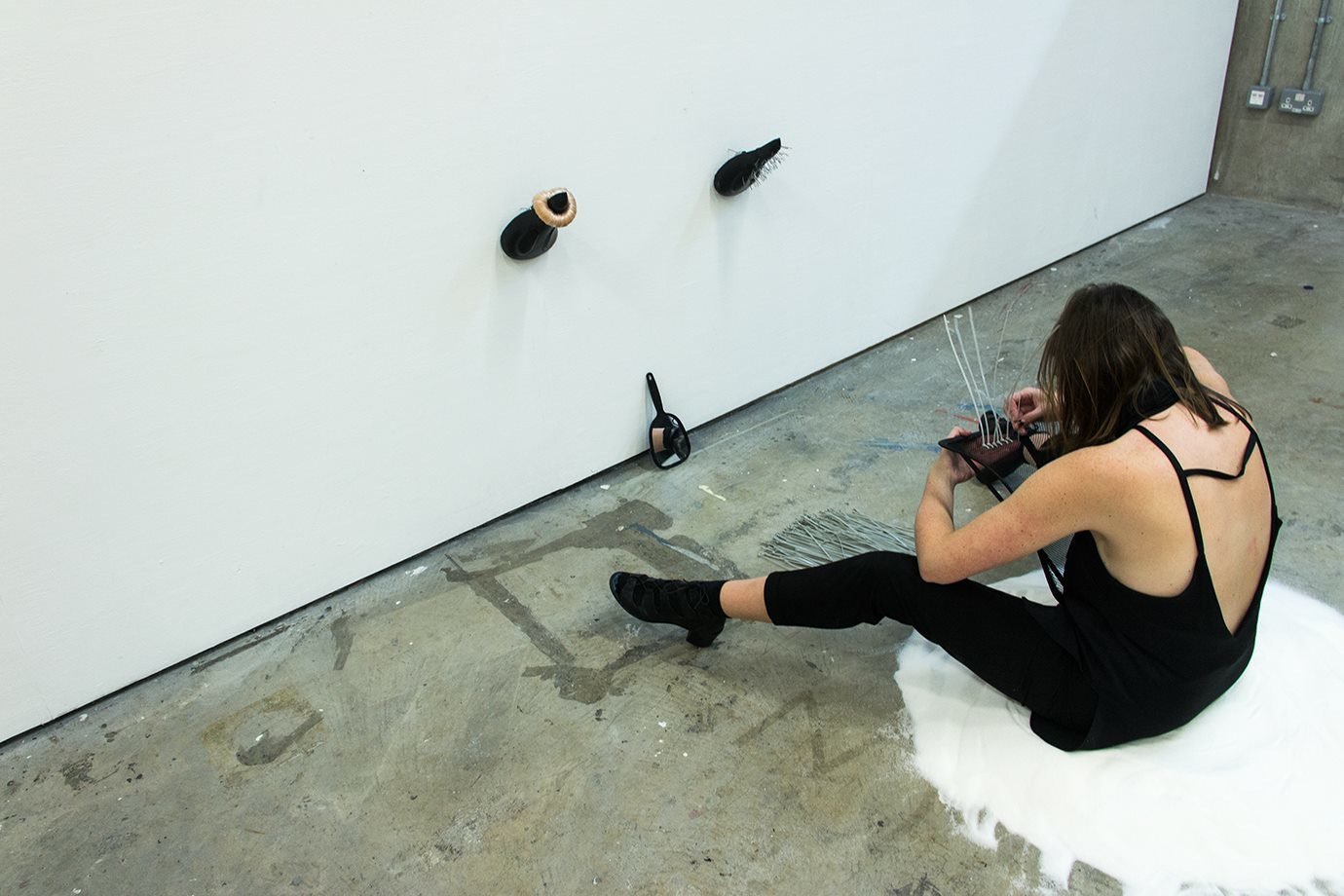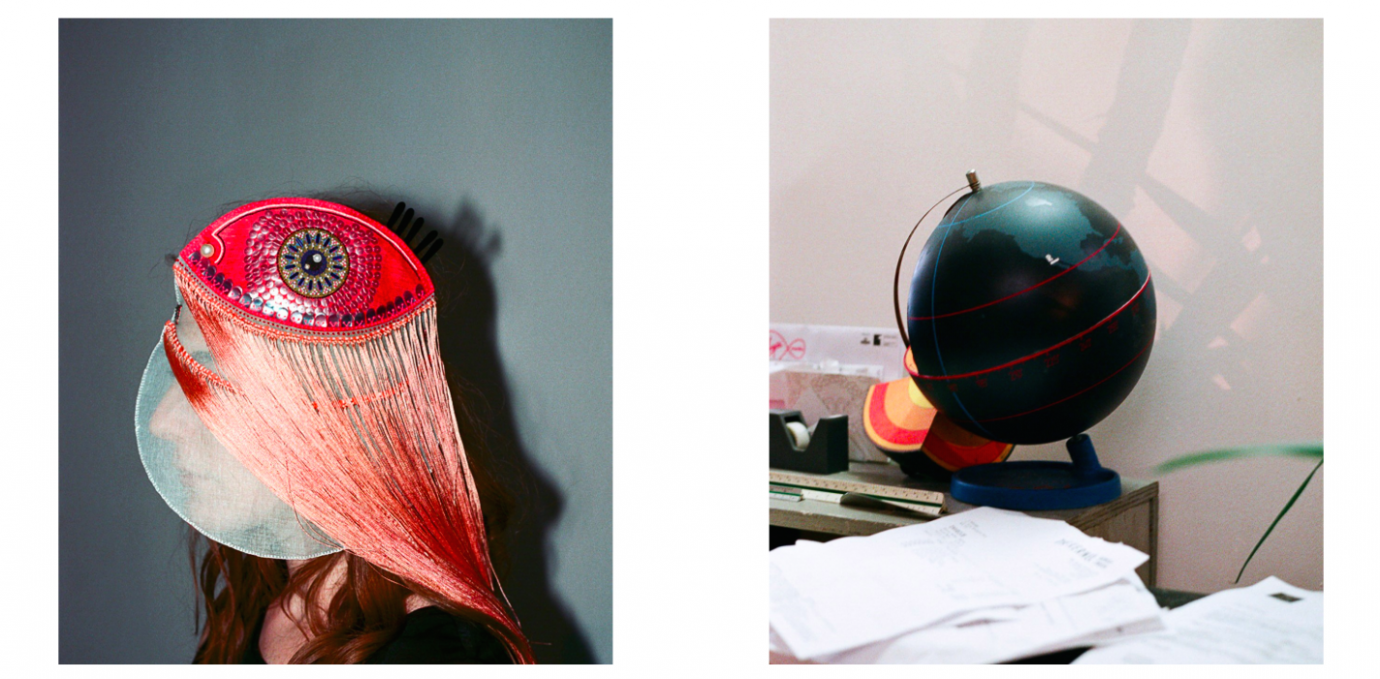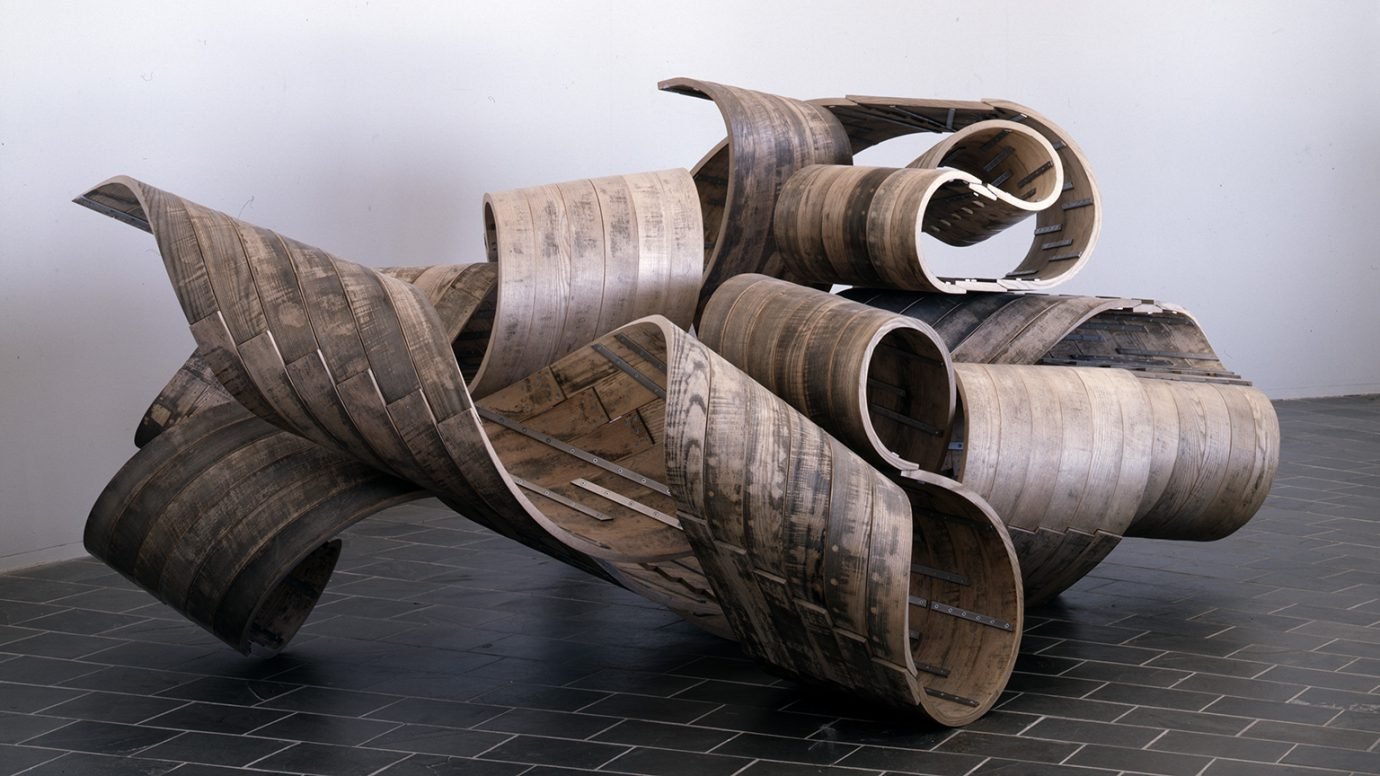This interview is part of DREAMERS, a collaborative project with MCQ that couples aspiring artists to their heroes for a one-on-one advice session. The conversations are recorded, redacted, and can be read in their entirety on my.mcq.com.
Thursday 13 May 2021, 5pm Australian EST
Lucy Nguyen-Hunt: I really wanted to talk with you because your career trajectory has been so inspiring. I admire how you’re doing curation but your practice is also still such a big part of your career. What are you working on at the moment?
Stanislava Pinchuk: I’ve got a career survey on at the Heide Museum of Modern Art at the moment. It’s pretty wild and it didn’t feel real for a long time! Now I’m working on a few stone sculptures, which is a lifelong dream for me. They’re going to a show quite soon before I move back to Bosnia this summer. So I’ve just been at some marble suppliers, and the sculptures are about the idea of Homer’s Odyssey being the great migrant epic. I’m also making my first film at the moment, which we will shoot in Bosnia. After I arrive we’ll go into pre-production, which is pretty terrifying and super awesome. It’s good to be scared. I’m actually working on quite a bit of architectural work at the moment as well, so permanent work with architects and building facades and stuff that I super love. Architecture is what really inspires me, sometimes more than other artists.
“When you’re an artist, it’s this up and down wave, but it’s good when you’re in the up and you feel supported, and you make the most of it. So that if the down comes, you’ve got a lot that’s fed you.” – Stanislava Pinchuk
Lucy: It’s so cool being able to have the resources to work in all those different mediums.
Stanislava: When I was a bit younger, I really loved my visual language – my drawings and data work – being cohesive and purist. While I still love those drawings and still make them and evolve them, I’ve really just come to this great spot of working with the right medium for the right idea. Maybe I don’t want to really be a filmmaker, but I know I need to make this film. It would have been really different if we spoke two years ago, but I was really supported to do new work in new mediums and applying for things. When you’re an artist, it’s this up and down wave, but it’s good when you’re in the up and you feel supported, and you make the most of it. So that if the down comes, you’ve got a lot that’s fed you.
“People will always want the thing that you made last, not the thing that you’re going to make next. You’re always being like a car salesman to make people believe that the next thing you want is the thing that they want.” – Stanislava Pinchuk
Lucy: What have been some career highlights for you so far, and what do you take away from these experiences?
Stanislava: I think we’re in it for the marathon, not the sprint. When I started out, I thought there’d be these really big things that would just change everything overnight. But then you wake up and it’s all still the same. So many things are more important externally to a creative; what’s in your soul and what actually develops us. It’s often the hardships and not the milestones. I got a philosophy degree, and I found that it really taught me how to read, how to think, and how to place a history of ideas. I think that was one of the best things I’ve ever done in my life and my practice. The first institutional exhibitions were huge, and looking back on it, those things really made a difference. But even the small things like doing talks, or a little fair or an event, they all accumulated into long-term relationships and support structures. The biggest milestones have also been the times where I’ve given myself space to make and do what I need to do, and gone against the current. People will always want the thing that you made last, not the thing that you’re going to make next. You’re always being like a car salesman to make people believe that the next thing you want is the thing that they want. You know you need to do it, but it feels counter instinctive, like you’re losing a safety net. But all those times have been the most phenomenal for me.
Lucy: I also feel that the times I’ve been struggling within my practice, that’s when I’m asking myself the most questions and reflecting the most.
Stanislava: Self-doubt is good until it’s not because it places you in the realm of self-awareness and consideration and accountability. That sticky in-between bit and the liminal spaces are really powerful places to be. And that’s when you push through or walk the desert, and you come out to somewhere quite interesting.
Lucy: In terms of your practice, I definitely want to know more about data mapping and how you came to incorporate it into your work. Would you say that it was related to your study in philosophy or is it more related to personal experience?
Stanislava: When I was a teenager, I was a bit naughty, I was really into punk rock and graffiti, and other people called me an artist before I called myself an artist. For a long time, I had the idea that artists need to be painters to be expressive. I still can’t paint, and I always fought the bit of myself that was really linear, mathematical, and exacting, because I thought that’s not what artists are – that’s for mathematicians. Then I started to know enough about the art world (through seeing shows and travelling) to understand that most of my favourite artists were cross-disciplinary. It’s a really forgiving place to be in, which is probably my favourite thing about it. I’ve always been super political and mathematical, and I knew that one day those bits would enter my practice, but I didn’t know how. I was sort of mapping myself living in Tokyo, drinking and dancing in my early 20s, making work about this big, beautiful city that I was in this giant urban structure.
Then when Ukraine was invaded, because I’m from eastern Ukraine, my whole life just was on fire, in every possible way. What happened in Ukraine was something I never thought would happen in my lifetime. I wasn’t really even thinking, I just made the work. I data mapped the ground, I taught myself how to use Rhino and AutoCAD and work with topographies. I was always really interested in geospatial work and the city, topography, land structures and I threw myself into it. I kind of wish that all that mathematical and political side of things didn’t enter my work in that way, but I guess that’s how it happened. It set a research question for me. Then I had to teach myself how to work with data ‒ these are things I’m still learning with every project because they’re so different.
“Mental health is the great battle of our generation, and it’s something we all have to learn. The modern world is inhuman: this amount of tech, this amount of news, this amount of updates, this amount of exhaustion. Even to stay afloat or make an income as millennials and Gen Z feels impossible. ” – Stanislava Pinchuk
Lucy: How do you manage the pressure and stress of work, as someone who is self negotiating time as an artist?
Stanislava: There’s no one answer because everyone’s so different. The work does offer a sense of hope, but sometimes it also does not. I think joy is a radical act in a society where many of us are forbidden from joy in the present or denied it even in our conception of the future. I’ve started taking weekends and it rocks my world. Dancing, seeing people, cooking, really banal domestic things. It is that human time and the time to rest the brain. I think being an artist is the biggest joy I could have in this life, and I hope to do it in one way or another, forever. I’ve never had a real sort of job, so I’ve got to be in it for the long game, otherwise I’m quite stuck and in trouble! But through all the tough times I think you’ve got to remember being an artist is a really extraordinary thing to do with your one time on this planet. Mental health is the great battle of our generation, and it’s something we all have to learn. The modern world is inhuman: this amount of tech, this amount of news, this amount of updates, this amount of exhaustion. Even to stay afloat or make an income as millennials and Gen Z feels impossible. Mental health is a day-by-day thing, and some days are better than others. I’ve been thinking a lot about the times I’ve been happiest, and it was always when I’ve been swimming the most and I’ve been looking at my phone the least.
Lucy: It’s really interesting to hear that from your perspective as someone who has been practising for a number of years. And it’s really good to see people who are able to keep doing this and that you don’t only become famous for your work when you die, because the world wasn’t ready for the work yet. It’s cool to see you being successful whilst you’re still really young and still learning all of these things.
Stanislava: At the end of the day, each thing just takes however long it takes, and sometimes that might be really instant, sometimes it takes a week and you’re full of passion or anger or immediacy. And sometimes it takes you ten years. There’s no point burning out through the work. Even though it sometimes feels hard, you do get to call the shots, and you have to be protective of the work in some way. One of my favourite Ancient Greeks – I’ve got a lot of them – was Epicurus and he said this really great thing about ‘everything in moderation, including moderation’. I’m really careful about this advice, sometimes you do just have to fuck it up and get feral or inhuman, or push yourself to some point of breakthrough, brokenness, and honesty, and from that place, things really come as well. But you also can’t do it all the time.
Lucy: What are you striving to achieve within your practice? Do you have any goals that you’re moving towards, or is there a dream idea for what your career might look like?
Stanislava: One of my favourite artists ever is Yoko Ono. I sometimes feel as if she’s half visceral, half cerebral. I saw her show at the MoMA, which is decades of work, and after I walked out I felt I knew every bit of her soul. I felt like she had encompassed every complicated aspect of her being into the work at some point. And when you walked away you knew so deeply intimately how much she had given of herself, and through humour, through weird text instruction, works of smell, and video. They were difficult things made into really playful things. I hope I can do something like that. That I have this work that’s like my best friend which expresses, at a certain point, everything that’s ever inspired me, or I’ve felt, or I’ve learnt from this world. It’s a kind of totality of the practice and your thinking. It’s such a magic thing, you know, and embrace whatever medium that takes under that generous umbrella of art, making, and thinking that we’re in.
Interested in learning more? You can find all the interviews from the DREAMER series here.









